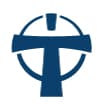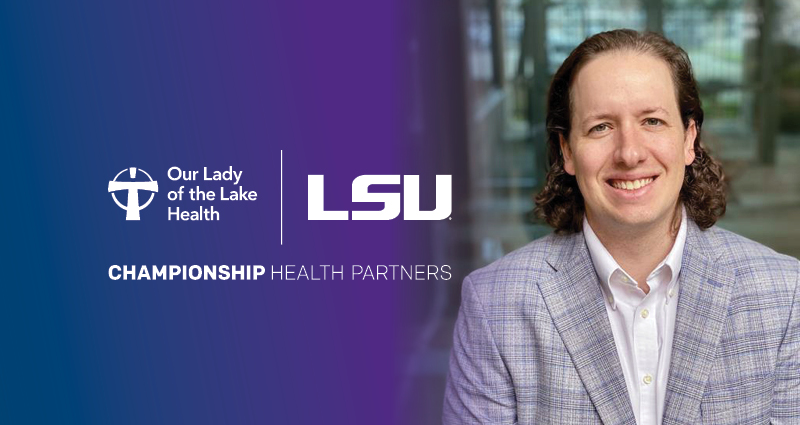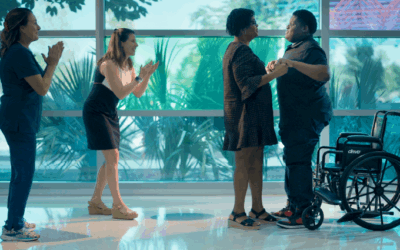Concussions can be a difficult injury to diagnose on the football field. With no definitive test or scan, team physicians and trainers use a standardized assessment to evaluate a player’s memory, balance, overall neurological function and other traits while looking for concerning symptoms such as confusion, dizziness or nausea.
While assessments and player safety protocols have dramatically improved in recent decades, the uncertainty of the diagnosis can lead to players potentially returning to play too soon, putting them at risk for further brain injury.
Researchers at Our Lady of the Lake Health and LSU are working together to improve the accuracy and speed of providing teams and players with a more definitive diagnosis. Led by Genevieve Palardy, PhD, associate professor in the LSU Department of Mechanical and Industrial Engineering, the collaborative team includes eight researchers who are working to create what they call “digital twins” of athletes’ brains — sophisticated computer models used to assess a personalized risk of brain damage. The goal is for the models to use real-time impact data from a game to provide fast, accurate analysis of a player’s health and help determine whether they’re at risk for brain injury.
Michael Truax Jr., MD, an emergency department physician at Our Lady of the Lake Regional Medical Center and Our Lady of the Lake Children’s Hospital, is part of the team working on the project. Through his work at the hospital as well as his duties as a member of the sideline medical team for LSU Football, Dr. Truax knows firsthand the complexities of a concussion diagnosis and the importance of providing accurate care.
“Concussions are a clinical diagnosis, it’s not something that shows up on a CAT scan,” explains Dr. Truax. “That can make it difficult for people to realize that this needs to be taken seriously and there needs to be certain protocols in place to ensure athletes are completely rested and healed before returning to play. It’s the repeated impacts while already in a concussed state that have been shown to cause significant long-term damage.”
Combining better data with computer brain models
While other studies have either gathered impact data or looked at brain models, none have successfully combined the two. In order to create an accurate “digital twin” of an athlete’s brain, researchers first need to provide it with precise data from the impacts a player experiences during a game. To do this, the research team is utilizing new sensor technology that fits discreetly in a player’s chin strap.
“Other studies have used sensors on a headband or in the helmet or in a mouthpiece,” says Dr. Truax. “The helmet sensors haven’t been as accurate because you’re really measuring the force on the helmet, not the brain itself. And the mouthpiece sensors haven’t been comfortable for the players. The hope is that these sensors will be more comfortable for them to wear. They may not even know it’s there.”
Along with improved impact sensors, the ”digital twin” models will be trained with post-game concussion evaluations and head injury simulations. Eventually, the researchers hope to show a direct link between the sensor measurements and potential brain deformation on the athlete’s “digital twin” — allowing teams to make better real-time assessments of player health.
The technology could serve as a valuable tool to help team medical providers, or even teams without sideline providers, make an accurate diagnosis without having to rely on tests that can be inaccurate or even manipulated by players who are eager to return to the game as soon as possible.
The research team plans to begin testing the sensors and computer models with a small number of high school players, roughly 25, spread across multiple area teams. While most football seasons are currently wrapping up, researchers plan to begin testing during spring practices with the goal of expanding the study next fall.
Next step: better helmets
While the computer model and speedy brain trauma diagnosis are the primary objectives of the research team, they also anticipate eventually using their findings to help develop a better helmet — potentially preventing brain injuries in the first place. Palardy has already worked on a previous project to design safer football helmets at LSU, which received support from the LSU Board of Supervisors with a LIFT2 grant and from the Louisiana Board of Regents with a proof-of-concept, prototyping grant.
This work could have benefits beyond the football field as well, with improved helmet technology helping to protect motorcycle riders and bicyclists alike.
Championship Health Partners
This research is one of five projects that received a combined $1.2 million in funding through the Collaboration in Action program (CAP), a partnership between Our Lady of the Lake Health and LSU that aims to advance the basic, clinical and translational science in five critical areas: cardiovascular disease and care, comprehensive cancer care, trauma and neuroscience, chronic respiratory disease, and sports medicine and performance.
In addition to Palardy and Dr. Truax, the team includes fellow Our Lady of the Lake colleagues Shannon Alwood, MD, Richard Lewis, MD, and Greggory Davis, PhD, as well as LSU Department of Mechanical and Industrial Engineering Associate Professor Hunter Gilbert, Assistant Professors Robert Herbert and Kshitiz Upadhyay, and Senior Instructor Andrew Becnel.
“We’re sort of a melting pot, using all of the strengths of Our Lady of the Lake Health and LSU to come together to help athletes,” says Dr. Truax. “Combining expertise in mathematics, engineering, clinical care and medical research, I feel like we have all the resources here. It’s been a great collaboration so far and I look forward to seeing what this study shows.”




